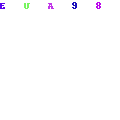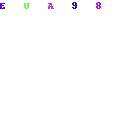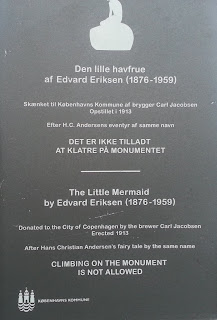
This booklet about the mosaics in Aquileia is published by the Italian publisher Bruno Fachin Editore. It is available in two editions, both of which include four languages:
** First
edition: Italian, German, English, and French in one book
** Second
edition: Polish, Russian, Czech, and Hungarian in one book
The text is
written by the Italian author Marzia Vidulli Torlo who is also the author of Trieste:
Historical and artistic Guide, also published by Bruno Fachin Editore.
In the
beginning of the book there is a brief chronology, which covers the history of
the town from the founding in 186 BC until AD 1915, when it was annexted into
the kingdom of Italy. There is also a map, which shows the modern roads and the
location of ancient monuments and archaeological sites.
The main
text is divided into sixteen short sections where the author presents mosaics discovered
or on display in the Cathedral (Basilica Patriarchale), The National Museum,
The Early Christian Museum, and the Roman houses in Aquileia.
At the end
of the book there is a chart which gives the opening times of the museums and
other locations in the town. Here are the headlines:
1. The
mosaics
2. The
National Museum
3. Vine-shoots
with a bow
4. The rape
of Europe
5. Asaroton
or “the unswept floor”
6. A small
panel with a fish
7. Mosaics
of the great baths
8. Houses
in the CAL fields
09. Houses
in the Cossar field
10. The
Cathedral (Basilica Patriarchale)
11. The
style of the mosaics in the Theodorian Halls
12. The
southern Theodorian Hall
13. The
northern Theodorian Hall and “the excavation crypt”
14. The
Early Christian Museum
15. Basilica
of Beligno or Tullio field
16. The mosaic
of the phoenix
The book is
fully illustrated. All mosaics mentioned in the text are shown with a picture.
All illustrations are in colour except a few drawings and floorplans which are
in black-and-white.
In antiquity
Aquileia was a large city, in part because it had an important harbour, but in
AD 452 Attila the Hun and his army conquered and sacked the city after a siege
which lasted three years. Today Aquileia is a small town; not as well-known, and
not as famous as Ravenna, which is also an important location for ancient
mosaics. But Aquileia is definitely worth a visit, and this book is a good introduction
to the mosaics that you can see there.
For more information about this place, I can suggest Aquileia: History, Art & Archaeology written by Marzia Vidulli Torlo and two other Italian scholars (Annalisa
Giovannini and Paola Ventura) and published by Bruno
Fachin Editore in 2012 (128 pages in large format).
I can also suggest Aquileia & Ravenna, where the English and Italian text is written by Alessandro Vigevani and the pictures are taken by Fulvio Roiter; published by Vianello Libri in 1994 (164 pages in large format).
I can also suggest Aquileia & Ravenna, where the English and Italian text is written by Alessandro Vigevani and the pictures are taken by Fulvio Roiter; published by Vianello Libri in 1994 (164 pages in large format).
If you
think it is difficult to get to Aquileia, you have to think again. It is quite
easy:
From Udine
you can take a bus (which continues to Grado on the coast). There are many
connections every day on weekdays (from Monday to Friday) and some connections
during the weekend.
From
Venezia Mestre you can take a train towards Trieste. Get off at Cervignano train
station and from there take a bus to Aquileia.
Once you
are there, you will find that the town is so small that you can walk to
every destination in a short time. Many visitors use bicycles, which can be a good
idea, because the landscape is flat, and there is a separate bicycle lane along
several roads.
Marzia
Vidullo Torlo’s slim volume about the mosaics in Aquileia is a great way to study
and understand the ancient monuments in this town. If you are interested in
ancient history, in particular ancient mosaics, I am sure you will enjoy this
book.
* * *
Marzia Vidulli Torlo,
Aquileia: Mosaici,
Bruno Fachin Editore, 2011, 64 pages
* * *














